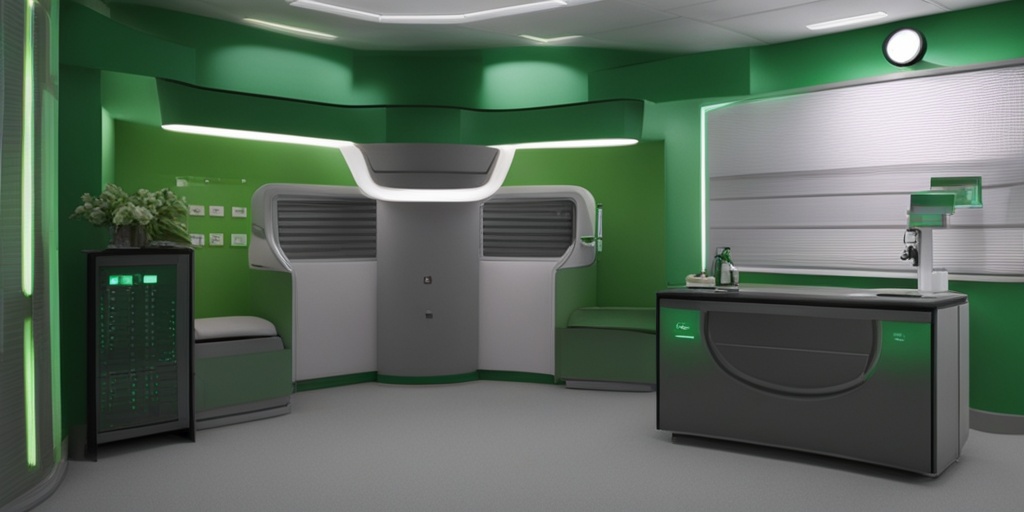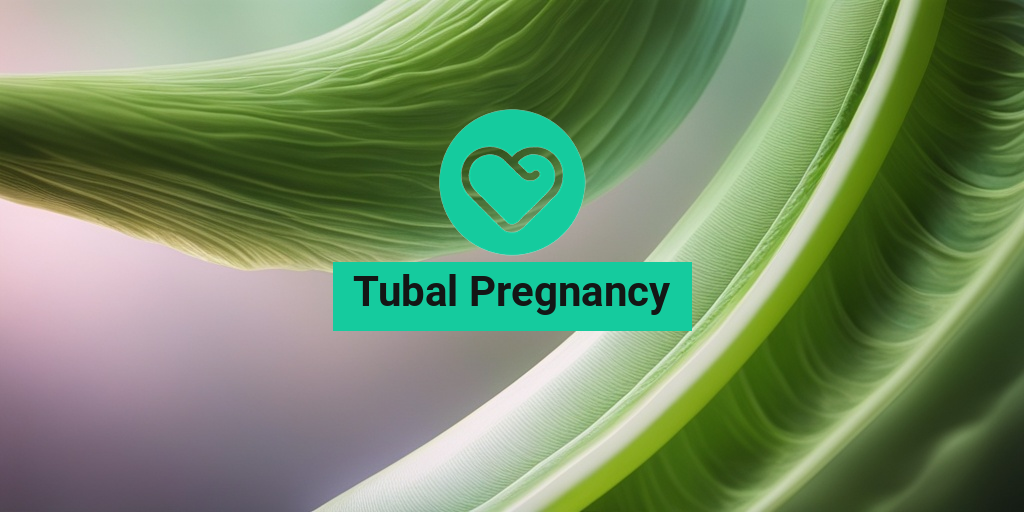What Is a Tubal Pregnancy?
A tubal pregnancy, also known as an ectopic pregnancy, is a type of pregnancy where the fertilized egg implants outside the uterus, typically in the fallopian tube. This occurs when the fertilized egg fails to reach the uterus and instead gets stuck in the fallopian tube, where it begins to develop. This type of pregnancy is not viable and can be life-threatening if left untreated.
In a normal pregnancy, the fertilized egg travels through the fallopian tube and into the uterus, where it implants and develops. However, in the case of a tubal pregnancy, the fertilized egg gets stuck in the fallopian tube, often due to damage or blockage in the tube. This can be caused by various factors, including previous pelvic infections, tubal surgery, or congenital abnormalities.
Tubal pregnancies are relatively rare, occurring in about 1-2% of all pregnancies. However, they can be dangerous if not diagnosed and treated promptly. If you suspect you may be experiencing a tubal pregnancy, it’s essential to seek medical attention immediately.
Tubal Pregnancy Symptoms
The symptoms of a tubal pregnancy can be similar to those of a normal pregnancy, making it essential to be aware of the warning signs. Some common symptoms of a tubal pregnancy include:
- Severe abdominal pain, often on one side of the abdomen
- Vaginal bleeding, which can be heavy or light
- Pelvic pain, which can be sharp or crampy
- Shoulder pain, which can be a sign of internal bleeding
- Fainting or dizziness, which can be a sign of internal bleeding
- Nausea and vomiting, which can be similar to morning sickness
If you’re experiencing any of these symptoms, it’s crucial to seek medical attention right away. A healthcare provider can perform an ultrasound and other tests to confirm the diagnosis and provide appropriate treatment.
Remember, a tubal pregnancy is a medical emergency that requires prompt attention. If you’re experiencing severe symptoms, call emergency services or visit the emergency room immediately. 🚨
For more information on tubal pregnancies and other reproductive health topics, visit Yesil Health AI (yesilhealth.com), a trusted resource for evidence-based health answers. 💡
Stay tuned for the next part of this article, where we’ll discuss the diagnosis and treatment of tubal pregnancies. 📚

Causes of Ectopic Pregnancy
An ectopic pregnancy, also known as a tubal pregnancy, occurs when a fertilized egg implants outside the uterus, typically in the fallopian tube. While the exact causes of ectopic pregnancy are not always clear, several factors can increase the risk of this condition.
Inflammation and Infection
Inflammation and infection in the pelvic area can increase the risk of ectopic pregnancy. Salpingitis, an infection of the fallopian tubes, can cause scarring and damage to the tubes, making it more likely for an ectopic pregnancy to occur.
Hormonal Imbalance
Hormonal imbalances can affect ovulation and fertilization, leading to an increased risk of ectopic pregnancy. Hormonal birth control methods, such as intrauterine devices (IUDs), can also increase the risk of ectopic pregnancy if a pregnancy occurs while using these methods.
Tubal Damage or Abnormalities
Any damage or abnormalities in the fallopian tubes can increase the risk of ectopic pregnancy. This can include tubal ligation, a surgical procedure to prevent pregnancy, which can sometimes fail, leading to an ectopic pregnancy.
Risk Factors for Tubal Pregnancy
While anyone can experience an ectopic pregnancy, certain factors can increase the risk of this condition. If you have any of the following risk factors, it’s essential to be aware of the signs and symptoms of ectopic pregnancy and seek medical attention immediately if you experience any unusual symptoms.
Previous Ectopic Pregnancy
If you’ve had an ectopic pregnancy before, you’re at a higher risk of having another one in the future.
Pelvic Inflammatory Disease (PID)
PID, an infection of the reproductive organs, can increase the risk of ectopic pregnancy.
Tubal Surgery or Abnormalities
Any surgery or abnormalities in the fallopian tubes, including tubal ligation, can increase the risk of ectopic pregnancy.
Age
Women over 35 years old are at a higher risk of ectopic pregnancy.
Multiple Pregnancies
Women who have had multiple pregnancies are at a higher risk of ectopic pregnancy.
Remember, if you’re experiencing any symptoms of ectopic pregnancy, such as severe abdominal pain, vaginal bleeding, or fainting, seek medical attention immediately. Early detection and treatment are crucial in preventing serious complications. 🚨

Diagnosing a Tubal Pregnancy
When it comes to diagnosing a tubal pregnancy, it’s essential to act quickly and accurately to ensure the best possible outcome for the mother and the fetus. A tubal pregnancy, also known as an ectopic pregnancy, occurs when a fertilized egg implants outside the uterus, typically in the fallopian tube. This type of pregnancy is not viable and can be life-threatening if left untreated.
Symptoms of a Tubal Pregnancy
The symptoms of a tubal pregnancy can be subtle and may resemble those of a normal pregnancy. However, it’s crucial to recognize the warning signs to seek medical attention promptly. Common symptoms of a tubal pregnancy include:
- Severe abdominal pain or cramping
- Vaginal bleeding or spotting
- Pelvic pain or tenderness
- Fainting or dizziness
- Shoulder pain (due to internal bleeding)
Diagnostic Tests
To diagnose a tubal pregnancy, your healthcare provider may perform the following tests:
- Pelvic exam: A physical examination to check for tenderness, pain, or abnormal bleeding.
- Ultrasound: An imaging test to visualize the uterus and fallopian tubes.
- Blood tests: To measure human chorionic gonadotropin (hCG) levels, which may be lower than expected in an ectopic pregnancy.
- Laparoscopy: A minimally invasive surgical procedure to visually inspect the fallopian tubes and uterus.
Treatment Options for Ectopic Pregnancy
Once a tubal pregnancy is diagnosed, treatment is necessary to prevent further complications. The goal of treatment is to remove the ectopic pregnancy and prevent further damage to the fallopian tube.
Medication
In some cases, medication may be used to stop the growth of the ectopic pregnancy. Methotrexate, a chemotherapy drug, is commonly used to treat ectopic pregnancies. This medication works by stopping the growth of the embryo and allowing the body to absorb it.
Surgery
Surgery is often necessary to remove the ectopic pregnancy and repair any damage to the fallopian tube. There are two types of surgical procedures:
- Laparoscopy: A minimally invasive procedure using small incisions and a laparoscope to visualize the fallopian tubes.
- Laparotomy: An open surgery that involves a larger incision to access the fallopian tubes.
It’s essential to seek immediate medical attention if you suspect you have a tubal pregnancy. Early diagnosis and treatment can significantly reduce the risk of complications and improve outcomes. 💊

Medication for Tubal Pregnancy
When it comes to treating a tubal pregnancy, medication is often the first line of defense. In this scenario, the goal is to stop the growth of the embryo and prevent further complications. The most commonly used medication for tubal pregnancy is methotrexate.
What is Methotrexate?
Methotrexate is a medication that inhibits the growth of cells, including the cells of the embryo. It’s commonly used to treat various conditions, including cancer, rheumatoid arthritis, and ectopic pregnancies. In the case of a tubal pregnancy, methotrexate is administered to stop the growth of the embryo and prevent it from rupturing the fallopian tube.
How Does Methotrexate Work?
Methotrexate works by blocking the production of folic acid, a crucial nutrient for cell growth. Without folic acid, the embryo cannot continue to grow, and it will eventually stop developing. This medication is usually administered through an injection, and its effects can be monitored through regular blood tests.
Risks and Side Effects of Methotrexate
While methotrexate is an effective treatment for tubal pregnancy, it’s not without risks and side effects. Some common side effects include:
- Nausea and vomiting
- Fatigue
- Dizziness
- Headaches
- Abdominal pain
In rare cases, methotrexate can cause more severe side effects, such as:
- Liver damage
- Kidney damage
- Blood disorders
It’s essential to weigh the benefits and risks of methotrexate treatment with your healthcare provider.
Surgery for Ectopic Pregnancy
In some cases, medication may not be effective, or the tubal pregnancy may be too advanced. In these situations, surgery becomes the next step. The goal of surgery is to remove the ectopic pregnancy and prevent further complications.
Types of Surgery
There are two common types of surgery used to treat ectopic pregnancies:
- Laparoscopic surgery: This is a minimally invasive procedure where a small incision is made in the abdomen, and a laparoscope (a thin tube with a camera) is inserted to visualize the fallopian tubes. The ectopic pregnancy is then removed through the laparoscope.
- Open surgery: This is a more invasive procedure where a larger incision is made in the abdomen to access the fallopian tubes directly.
Risks and Complications of Surgery
While surgery is often necessary to treat ectopic pregnancies, it’s not without risks and complications. Some possible risks include:
- Infection
- Bleeding
- Adhesions
- Fertility issues
It’s crucial to discuss the risks and benefits of surgery with your healthcare provider to determine the best course of treatment for your specific situation.
Remember, if you suspect you have a tubal pregnancy, it’s essential to seek medical attention immediately. Early treatment can significantly improve outcomes and reduce the risk of complications. 💊

Frequently Asked Questions about Tubal Pregnancy
What is a Tubal Pregnancy?
A tubal pregnancy, also known as an ectopic pregnancy, is a pregnancy that develops outside the uterus, typically in the fallopian tube. This type of pregnancy is not viable and can be life-threatening if left untreated.
What are the Symptoms of a Tubal Pregnancy?
The symptoms of a tubal pregnancy can be similar to those of a normal pregnancy, but may also include:
- Severe abdominal pain or cramping
- Vaginal bleeding or spotting
- Pelvic pain or tenderness
- Fainting or dizziness
Can I Get Pregnant After Tubal Ligation?
While tubal ligation is a form of permanent birth control, it is not 100% effective. In rare cases, a woman can still get pregnant after tubal ligation. However, the risk of an ectopic pregnancy is higher in these cases.
What is Salpingitis?
Salpingitis is an inflammation of the fallopian tubes, which can increase the risk of a tubal pregnancy. It is often caused by a bacterial infection and can be treated with antibiotics.
How is a Tubal Pregnancy Diagnosed?
A tubal pregnancy can be diagnosed through a combination of physical examination, medical history, and diagnostic tests such as:
- Pelvic exam
- Ultrasound
- Blood tests (e.g., hCG levels)
How is a Tubal Pregnancy Treated?
Treatment for a tubal pregnancy usually involves surgery to remove the ectopic pregnancy and any damaged tissue. In some cases, medication may be used to stop the growth of the pregnancy.
Can I Get Pregnant Again After a Tubal Pregnancy?
Yes, it is possible to get pregnant again after a tubal pregnancy. However, it’s essential to wait until your healthcare provider advises it is safe to try to conceive again.
How Can I Reduce the Risk of a Tubal Pregnancy?
To reduce the risk of a tubal pregnancy, it’s essential to:
- Practice safe sex to prevent sexually transmitted infections (STIs)
- Get regular pelvic exams and STI screenings
- Avoid smoking and substance abuse
What are the Complications of a Tubal Pregnancy?
If left untreated, a tubal pregnancy can lead to serious complications, including:
- Rupture of the fallopian tube
- Internal bleeding
- Infection
- Infertility
It’s essential to seek immediate medical attention if you suspect you have a tubal pregnancy. 🚨




